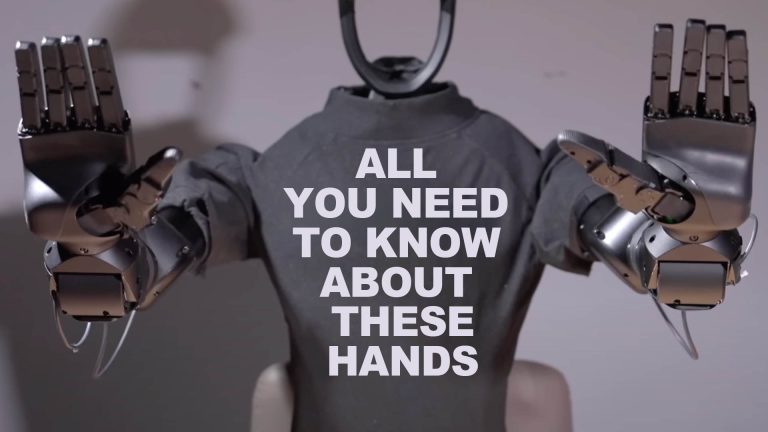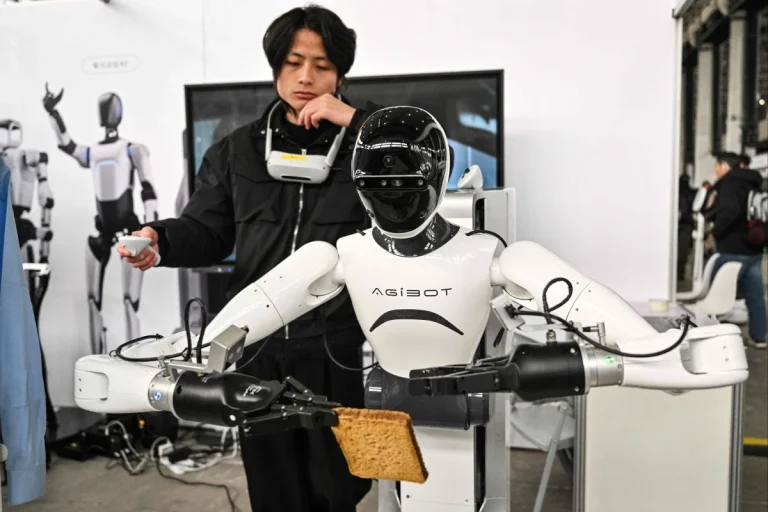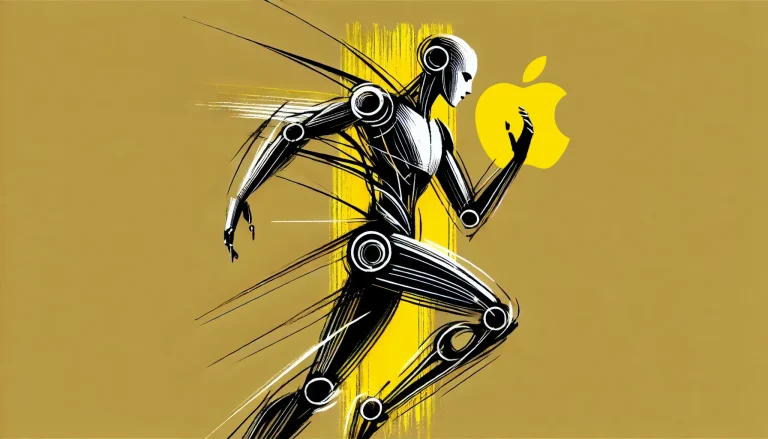Can China Beat Tesla in the Race for Humanoid Dominance?
Photo: Uneetree handout and Tesla’s humanoid robot Optimus at its exhibition booth during the World Artificial Intelligence Conference in Shanghai on July 5, 2024.
China is rapidly advancing in the field of humanoid robotics, positioning itself as a significant competitor to companies like Tesla. At the Lunar New Year gala in January, over a dozen human-like robots performed, highlighting the country’s progress. Videos showcasing Chinese robots executing complex movements have gained widespread attention, underscoring the nation’s commitment to this technology.
2026 Humanoid Robot Market Report
160 pages of exclusive insight from global robotics experts – uncover funding trends, technology challenges, leading manufacturers, supply chain shifts, and surveys and forecasts on future humanoid applications.

Featuring insights from
Aaron Saunders, Former CTO of
Boston Dynamics,
now Google DeepMind

2026 Humanoid Robot Market Report
160 pages of exclusive insight from global robotics experts – uncover funding trends, technology challenges, leading manufacturers, supply chain shifts, and surveys and forecasts on future humanoid applications.
The Chinese government is actively supporting the robotics industry, aiming to replicate its success in the electric vehicle sector. Local governments, including those in Beijing, Shanghai, and Shenzhen, have launched investment funds totaling at least $10 billion to foster robotics development. This strategic focus is part of China’s broader goal to become a global tech powerhouse.
Despite these efforts, China faces challenges in achieving self-reliance in core technologies essential for humanoid robots, such as advanced processor chips and high-precision sensors. The country remains dependent on foreign technologies, particularly from the United States, which poses risks amid ongoing tech restrictions and export controls.
Nevertheless, Chinese companies are making strides in cost competitiveness. Firms like Engine AI and Unitree have introduced humanoid robots at prices significantly lower than those projected by competitors like Tesla. Established electric vehicle manufacturers such as BYD and XPeng are also entering the humanoid robotics space, leveraging their expertise to scale production and reduce costs.







